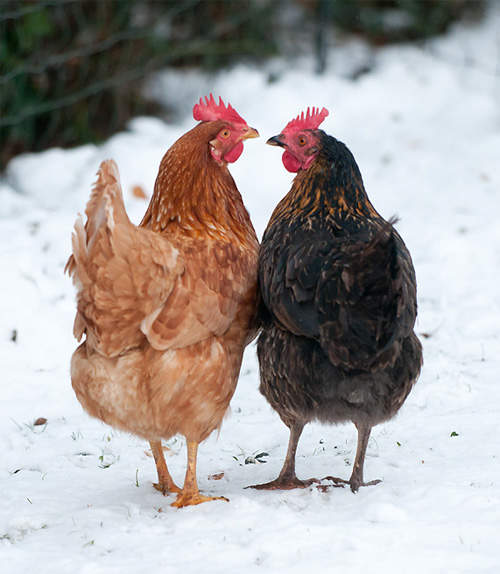 |
| I'm sorry, I'm going to need a moment to go and wash out the inside of my brain so I can never remember this shoe. |
I was excited to put out cauliflower this year since I'd never tried such an ambitious vegetable. (I'd like to take credit for success with my tomatoes but last year one literally grew in the dirt next to the pot without every having been planted. And produced. So.) I wondered how long it would take for the florets to form from the big healthy green cabbage-looking leaves, and I kept inspecting them, looking for those first telltale signs of white clusters. One morning when I went out there was a pale green cluster; in fact, there were pale green clusters all over all of the sets of leaves. Like nice fat little clusters. I was delighted. How had they grown so fast? I never expected them to come out green but now I was a FARMER and I knew that cauliflower comes out green. How exciting. If they grew that fast overnight they would probably double in size by tomorrow and I'd have ginormous, Whole Foods sized cauliflower heads in a few weeks. Ah, rapture! We'd be knee deep in cauli-rice (cauliflower grated on a cheese grater and cooked with cilantro and salt and pepper). I mentally set up the photo ops of myself in a lovely fitted dress holding a cauliflower head as my bouquet.
I looked closer and realized the little green clusters were looser than I'd originally realized and got really excited. Maybe each one of these little heads were going to grow into a separate floret. And with multiple clusters on each plant maybe there would be multiple heads! I was a cauliflower farmer! Maybe I could start a roadside stand like the end of the Dixie Chicks video "Goodbye Earl" and sell strawberry jam and cauliflower heads in a gingham off the shoulder top with a flattering neckline. I went inside to pull my sleepy husband out to the garden to show him my budding new business.
He peered inside the leaves. "Babe, those are aphids."
I was furious and shocked and suddenly terrified that he was right.
"No they're not," I said bravely.
He bent closer and picked at the green cluster. It came apart in his fingers, with effort, though it was still sticking to the leaf with malicious adhesion. With a cry of dismay I fell on my knees and dug through the cauliflower leaves and picked the center clusters apart. Aphids. I wailed to the heavens and tried stubbornly to pick off the aphids in hope there was something buried inside the clusters of bug bodies. Aphids. Nothing but aphids all the way through to the center. No cauliflower buds. No emerging leaves. Just a crawling, writhing, filthy pile of APHIDS living in sin with no other purpose than to devour my dreams.
 |
| Why. Why would you do that. |
Bottom line, it's not been easy for me to recognize things like beneficial bugs. The very concept of that seems oxymoronic. Following the aphid-pocalypse I bought expensive boxes of ladybugs which I delicately refrigerated and carefully, lovingly, trustingly bedded amid my cauliflower plants. They blackened my plants in impossible numbers with so many many legs, for the first time in my life I realized a ladybug was not an adorable pet but a foul swarming beetle; and then in the morning they took off, leaving the aphids all but untouched, presumably in search of the next champagne and aphid caviar bender they could hustle their little polka-dotted behinds into. Oh, aren't we SO cute. Betrayal, most foul, ladybugs. You are no lady.
 |
| Lady, my ass. |
However...
About a month later, after the sullen and resentful aphid-stunted cauliflower leaves finally withered in on themselves at last and died, I dug up their beds and went to plant peas, and noticed all the nice fat red wiggler earthworms squirming around in the half-compost soil mix I'd made. I definitely didn't want to touch them but I went and got my little poppy-print garden gloves (aha! This is what those are for!) so I could finish turning the soil without having to worry about getting worm on me and finished the job without disturbing them. The peas and bush beans I planted came up like gang busters. When I finally got ready to renovate the bed again this time I fitted the chicken run over the top and let them feast on the spent pea shoots, bean leaves, and all the worms they could dig up. When I went to turn the soil the next day, there were even more red wigglers, even after the chick-pocalypse, than I'd seen before the peas. Hmm.
My husband suddenly got all excited about something he'd read about called black soldier flies, which could supposedly chow through six inches of green compost a day (human food waste, basically) without needing any leaf or wood amendments. He started sending me links with bizarre composting contraptions and videos of what the soldier fly grubs looked like; and then with all the pride he'd had in introducing his first born to people, he announced that we. HAD. SOLDIER FLIES! YES! In our very own backyard, flies. Who could have known that this momentous occasion would strike our simple farm. It's far more than I ever dared to dream.
And they were gross. When I got home from work that day he took me out to show me his exciting discovery and shyly lifted the compost bin lid to expose the writhing heaps of soldier fly larva. Like thick, serrated, fat and stubby worms, they lay wriggling all over each other, cupped inside an orange peel.
"You're disgusting," I told him primly, and turned on my heel to head back inside.
He took a video of his precious grubs and posted it on Facebook.
Then came in sadly to tell me he hadn't gotten even one "like".
I have to admit, over the next few days I became sort of fascinated with the grubs when I realized they really were going through a half foot of waste a day and turning it into beautiful black castings for our garden beds. They were gross. They writhed and crawled over everything in the compost bin. I waited to see the adult flies, but realized I never did. The females just laid their eggs inside the compost bin and settled in to a life cycle near the renewable food source, our trash. Huh. I realized they were eating our peels and pulp and coffee grounds, and decided to stop the tedious but necessary practice of cutting up our organic trash into 1" pieces for the compost bin. Disposing of a pineapple had been hell, but now the little guys in the compost bin cleaned the rind for me completely and turned it into soil. Huh.
I started watching them. There they were, unattractive, unsightly, unassuming, but patiently taking what we would have sent to a landfill and turning into super nutrients for our garden. We'd use the dark soil they made in a bed for carrots and then give them the carrot peels to start the process again. It was...elegant. Once a week, my husband took a handful of the grubs and threw them to the chickens to scratch for, keeping the numbers from getting overwhelming, giving the chickens some extra protein, and saving us on having to buy the chicks supplements.
Yesterday I saw one that had escaped when my husband turned the compost piles and realized when I saw it sitting there that it wasn't gross at all. While it certainly wasn't cute or the kind of bug you'd hold out your hand to hold, it was compact, utilitarian, and functional. Soldier fly was a great name for these guys--they had one job and the did it ad infinitum, impossibly, genetically well. This simple black grub had earned my respect.
I scooped him up and deposited him back into the compost bin where he happily wriggled over to a carrot piece to grimly start his work.
I was surprised to find I didn't shudder at all.






